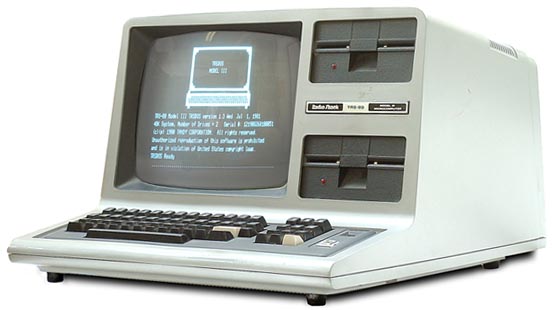Ancient industrial machines use ancient windows computers. This has been known forever. There’s a whole niche industry of very expensive ram and hard drives and other components keeping this industry going
I run a computer on Win7 at work, because it needs some important legacy software. It can’t be containered because it has a nasty licence manager.
And my oscilloscope runs on Win98.
I would still be using Windows 7 if it was safe to connect to the internet.
I can’t believe government systems are just open to cyber security like that.
Are there not cyber terrorists for some teenager that has tried to do anything with these unsecured systems?
I’d still be using Windows 7 if I could.
I mean, you can if you want to
It’s not safe and all that stuff.
MS DOS 6.6 for me - I enjoy the power of a 286 processor and much smaller instruction sets.
:O
I know it’s not exactly the point of the article but for a lot of things, I reckon a good amount of ‘innovation’ was pretty pointless. I personally don’t think I ever needed anything that Office 2003 can’t do… (Of course I don’t use any MS office to begin with but you get the point)
Everything beyond the Dewey decimal system is/was pretty unnecessary, imo. We created a way to organize and “quickly” locate information stored in a physical format.
The near complete lack of manual labor has had many long reaching effects on society.
I type this on my brand new flagship phone…
I’ve been trying tk get family to switch to Linux, but some are irrationally attached to MS Word. I wonder if Office 2003 will run in Wine?
I’ve had success with Office 2010 under Wine.
https://appdb.winehq.org/objectManager.php?sClass=version&iId=18487
I’ve heard LibreOffice has settings that make it look like Word
=Let(), Lambda and Regex were good additions to Excel imo
Whoa I had no idea of those functions. I just checked the documentation and I already know a hundred places I could use those.
The elevator was running Windows XP.
Clearly a extreme case of overengineering. An elevator has no business running more than a few microcontrollers.
But how else can it book requests for priority access, and verify the credit card for whoever booked the elevator?
In highrises with lots of stops and users, it uses some more advanced software to schedule the optimal stops, or distribute the load between multiple lifts. A similar concept exists for HDD controllers, where the read write arm must move to different positions to load data stored on different plates and sectors, and Repositioning the head is a slow and expensive process that cuts down the data transfer rate.
It’s probably only the screen component that is running an old version of embedded windows.
That’s what I think too. And then I see “Their systems are built into everything around us”, which basically only applies to PCs and laptops. What is built into pretty much everything around us is GnuLinux.
What is built into pretty much everything around us is GnuLinux.
Many things, but far from that.
Not even GNU - just Linux.
Yeah yeah, something something GNU/Linux blah blah copypasta…
Screen? In a elevator?
How else are you gonna show ads?
I hate that you are right.
Yes? That is not that unusual and it is mentioned in the third sentence of the article.
As I rode up to the 14th floor, my eyes were drawn to a screen built into the side of the lift.
Those screens can easily run on an integrated Raspberry Pi microcontroller, they dont exactly have complex graphics
RPi is not a microcontroller.
We are far away from the release of the Raspberry Pi if that screen is running an early version of Windows CE. Putting a PC in the elevator to drive the screen was probably the most cost effective solution.
Was but theres no reason to keep doing that
There’s not particularly good reason to stop doing it in that scenario either.
You have an offline technology stack in that elevator that has been doing the job correctly for 20 years. Why take on the expense and risk of changing things that aren’t currently broken?
It would be crazy if you are building new to resort to that stack, but for an established elevator, why bother?
Same for some old oscilloscopes at work. I’m not crazy about the choice but I can hardly suggest it would be practical to change it while the oscilloscopes still do their function.
I would say it’s a problem if the stack is online, but if it is self contained, the age of the software doesn’t make it a problem in and out itself.
New ones probably use something newer. The 20 year old elevator in a hospital will only be upgraded if something breaks.
Qube cinema servers only got off XP in 2015. They’re still on 7 though.
there’s a word for those people: awesome
windows xp was peak; running anything before xp is legendary
Idk, it was horrendously insecure, would freeze a lot, and missing creature comforts like window tiling.
If they kept refining Win7 it would’ve been great.
Idk, it was horrendously insecure, would freeze a lot, and missing creature comforts like window tiling.
It was significantly more secure than it’s DOS-based predecessor of the time, Windows ME (that’s a whole other rabbit hole; if you wanna talk insecure and buggy as fuck - look no further). That’s what people don’t realize, they look at the past through a modern lens. You gotta look at it from the time it was released. There’s a reason mainstream consumer-focused Windows editions dropped DOS and moved to the NT kernel. XP was the first real consumer version of Windows based on
XPNT.If they kept refining Win7 it would’ve been great.
They did, it was called “Windows 8” and nobody liked it.
But before ME there was Windows 2000, with its particularly gorgeous spin of the classical design, and other than appearance - being kinda same as XP, but faster.
XP was the first real consuner version of Windows based on XP.
On NT you mean, and no, W2K was a consumer system.
XP was the first real consuner version of Windows based on XP.
On NT you mean
Whoops! Yes, NT.
But before ME there was Windows 2000, with its particularly gorgeous spin of the classical design, and other than appearance - being kinda same as XP, but faster.
[…]
and no, W2K was a consumer system.
W2K was most definitely not built with consumers in mind; the base edition was “Professional” and was meant to be a workstation OS. It was a bit of an oddball in that a not-insignificant amount of power users preferred it at home over 98/Me - but it was a business-oriented system first and foremost. XP added a lot of features over 2000, including more consumer-oriented tools and applications. That’s why I specified XP as “the first real consumer version”.
Personal anecdote: When I was in jr high, the “family PC” was a Toshiba laptop loaded with W2K, and compared to the W98 system we had before, 2000 was certainly not meant for “regular” home users. That’s what Me was supposed to be, but we all know how that went… IMO, I’m almost certain that the downfall of Me, paired with W2K being as good as it was at the time, was part of the driving force for MS to base future consumer versions on the NT kernel.
But this article is talking about people running Windows 7 today, so comparing current actions through a modern lens is entirely valid
Technically, they did, and it was not great.
I ran Linux 1994ish. Amiga OS before. Amstrad CPC 464 before. A friend ran Sinclair ZX-80, that was the first system I had access to.
aside from radio shack and texas instruments that i used at camp, i think i was sadly too young to do anything but windows 3.1 :( our first computer was a tandy sensation in the early 90s and i didn’t really play with linux until maybe the mid 2000s
except for playing with apple IIe and radio shack computers through school and camp, that is.
TRS-80 and TI 99/4A presumably?
i’m pretttyyyyy sure this one is the one we had at camp :)

“stuck” more like happy to not have to deal with the last 15-ish years of microsoft ruining everything they previously excelled at.
They lost me when they removed the start button on the left side of the taskbar in version 8.1 (I think it was) to… Be cool with the kids (I think 8.1 was supposed to be touch screen friendly)? I don’t even know, but I went back to Windows 7 for a long while.
The backlash with the start button was so huge that they put it back on the taskbar in Windows 10 (at least mine has it and is the reason I got Windows 10). I’m currently refusing to update to Windows 11, because it apparently crashes when playing certain video games and I’m not about to have the other trash bugs that come with it, which I’ve been seeing posted on Microsoft help forums when I search for Windows 10 related questions. Fuck that noise, I don’t want to deal with it.
They seemingly wanted to design the entire interface around touchscreen 2-in-1s. If you went in a Microsoft store around the time windows 8 came out, they were leaning really hard into the 2-in-1s. I got a surface pro 3 at that time that I used to take handwritten notes in school, and the windows 8 interface was honestly awesome with that use case. On my desktop PC, though, I held out updating from 7 until windows 10.
Windows 8 removed the start button, 8.1 brought back most all of the “legacy” UI features (which still persist today).
It might be. I remember buying a laptop at that time and it came with 8 and it annoyed me so dang much.
I have had better luck with game compatibility using proton on linux than I had with win 11
Never thought I’d miss Ballmer, but here we are.
Yeah. Its a gross feeling isn’t it?
Why not? Still using Windows 7 on one of my ThinkPads. It’s a solid system, if you know what you’re doing and how to use is safely.
and how to use is safely.
Such as by disconnecting the ethernet and power cables
I wouldn’t be surprised if there are a bumper crop of level 10 CVEs in the latest and “greatest” version of Windows 7 that will never get patched. Unless you have one of those special enterprise licenses that they keep updating.
I had a 486DX running DOS for writing and editing CAM programs for CNC mills, lathes, pipe bender, and a laser cutter. And for funsies, an even older Macintosh that booted from a 5 1/4" floppy that ran a CMM, (co-ordinate measuring machine). And the software for the CMM ran from another 5 1/4" floppy.
This was about 2017 before I retired as a toolmaker.
I like the little typo … c:// :)
I’m disturbed that an elevator is running a desktop OS. How did this happen? Did they never hear of microcontrollers?
I could tell you the stories of W95 & XP that runs the medical world…
My assumption would be that the display is not related to operating the elevator, but rather displaying information about businesses on the respective floors. I’ve seen those a fair few times, and since they run on isolated networks or even fully local, there’s little risk.
Frighteningly, i worked as an admin at a hospitality wifi business that ran a windows box for dhcp duty. I would have to go o site, in the middle of the night, down to the basement of this hotel, and reboot the damn thing. It would die almost every week. Replaced with a linux server and never heard from them again.
I was tearing out ancient infrastructure for a new office and my eye kept going to a rectangular square box on the wall. Finally realized it was a PC! The cause of death was clear, PSU fan died, killed itself from heat. It was a form factor I had never seen, but standard nonetheless. It was running an answering machine system in DOS, still worked! Such a rare machine I’ve only found a single reference on the web and a single video about it. 1999, 486XS (I know, would kill for a DX, it’s soldered on), upgraded from 2x 2MB SIMMs to a whopping 2x 64MB SIMMs. Imagine what that would have cost in the day!
LONG story, but I got it running Windows 95b. 3.1 was just too much challenge to get it networked and happy. Much pain was removed when I got a USB floppy emulator. Can’t do jack without a floppy! Broke the network card drivers, need to start over. Had it running Doom with a legit SoundBlaster card and could RDP into over the network.
It was an amazing journey getting it all together and updated. Most of that knowledge is gone from the internet, and I sure don’t remember all the tricks. Going to be my first token ring machine! LOL, had to get parts from Romania and trash cans.
Man, remember when people used to break into offices to steal the RAM?
My work experience in around 1995 was spent at a local computer firm.
At one point a group of men in balaclavas showed up, the boss stopped playing Doom long enough to cover the security camera and hand over a bunch of crumpled banknotes, and I was handed this pile of SIMMs to put in a test rig to make sure they were OK to sell.
I also had to straighten the pins on used/stolen 486 CPUs, and pretty sure at one point was taken to break into a warehouse. There was certainly nobody else in the whole building, and we loaded the van with a bunch of cheap looking boxes before taking them back to HQ.
The boss was also banging a girl in my class, which in later years I learned makes him a paedo. Times sure were simpler in 1995.
If you ever see yourself in the need of information about the DOS era again, Vogons is the place to go IMHO.
But it’s all in poetry, unfortunately.
The cause of death was clear, PSU fan died, killed itself from heat.
PSU: “Release…me…from this mockery called life”
I binge people doing this type of thing on YouTube lol. I miss working in the industry
I’m visiting my parents in my home country after many years of not being there. I’m hoping my dad’s old pentium 2 laptop is still around.

















